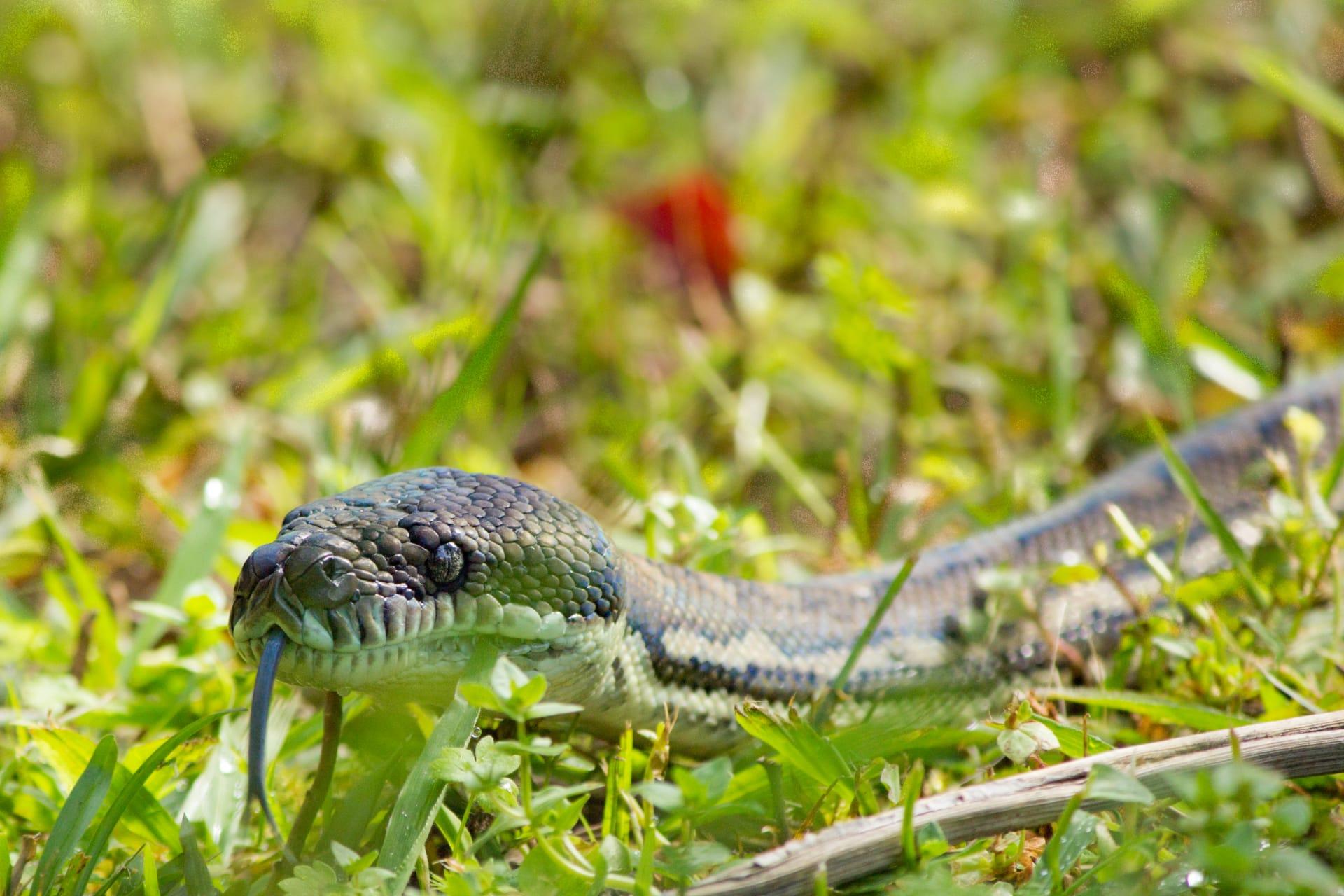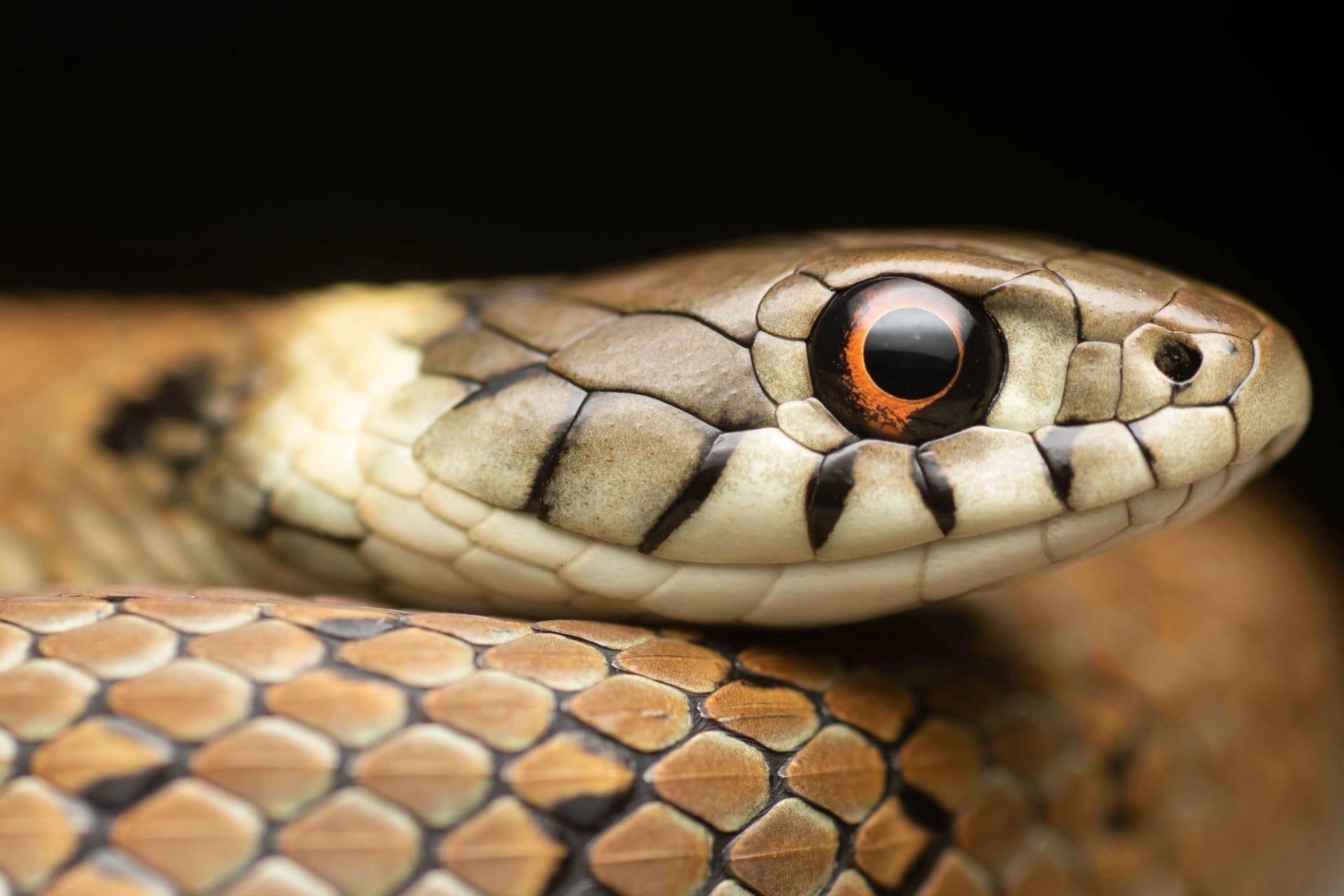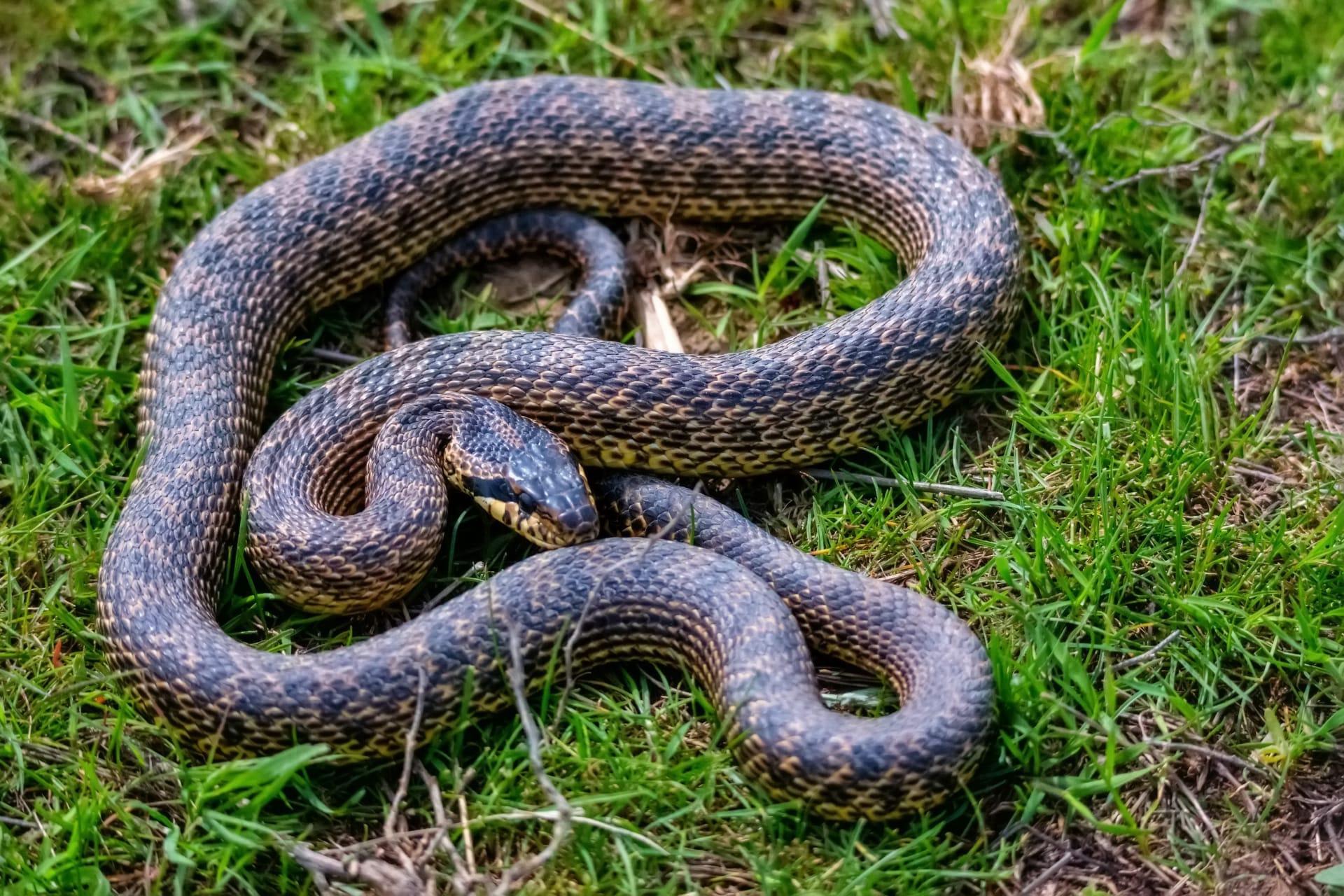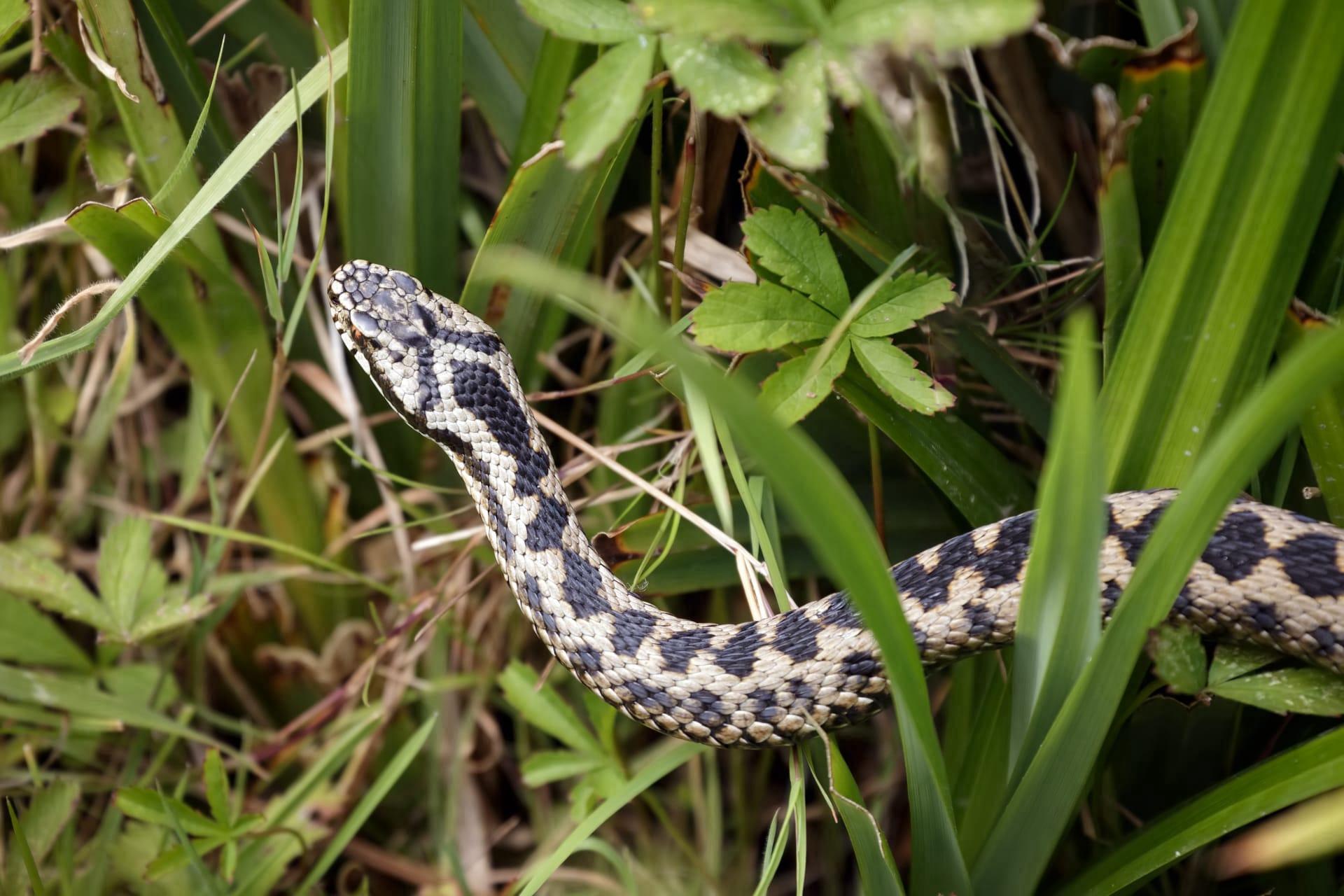Grass Snake
- Home /
- Mini Encyclopedia /
- Animal /
- Grass Snake
1
The Grass Snake, scientifically named Natrix natrix, belongs to the Colubridae family, which is a large family of non-venomous snakes. This species is distinguished by its elongated body and variable coloration, typically presenting a greenish, brown, or grey backdrop with dark spots. They possess a distinctive yellow collar behind the head, serving as a key identification feature. Adult grass snakes can reach a length of up to 150 centimeters but commonly average around 90 to 110 centimeters.
Grass Snakes are primarily found across Europe and into western Asia, with their habitat extending from the United Kingdom and Scandinavia in the north to northern Africa and the Middle East in the south. These reptiles are versatile in their habitat preferences, often residing in wetlands, grasslands, and woodlands near water sources like ponds, lakes, and rivers. They thrive in these environments due to their semi-aquatic nature, adept at swimming and often hunting amphibians in or near water bodies.

2
Question: Do Grass Snakes pose a threat to humans with their venom?
Answer: Contrary to a common misconception, Grass Snakes are not venomous and pose no threat to humans. They are often mistaken for other venomous snake species due to their similar appearance. However, Grass Snakes are harmless and typically resort to defensive tactics like playing dead or emitting a foul-smelling substance when threatened. They lack venomous fangs and instead have small, recurved teeth designed for catching and holding prey, primarily amphibians and small fish.

3
Grass Snakes employ several survival strategies that are fascinating. Firstly, they are excellent swimmers, utilizing this skill to hunt for amphibians and small fish in water bodies. This aquatic ability also aids in evading predators. Their diet mainly consists of frogs, toads, and newts, which they hunt using their keen sense of smell and sight.
Another significant survival strategy is their defensive behavior. When threatened, Grass Snakes often play dead, lying motionless with an open mouth and sometimes emitting a foul smell from their anal glands to deter predators. This act of thanatosis makes them less appealing to potential threats. In colder regions, Grass Snakes hibernate during winter, seeking shelter in compost heaps, burrows, or rock crevices to survive the freezing temperatures.

4
In the ecosystem, Grass Snakes play a crucial role as both predators and prey. As predators, they help control the population of their prey, mainly amphibians like frogs and toads. This predation contributes to maintaining a balanced ecosystem. Their presence indicates a healthy environment, particularly in wetlands, as they require clean water bodies for hunting and thriving.
Grass Snakes also serve as prey for various larger animals, including birds of prey, foxes, and larger snakes. Their role in the food chain highlights the interconnectedness of species within an ecosystem. The survival and health of Grass Snakes can be an important indicator of the overall health of their habitat, making their conservation significant for ecological balance.

5
Film: "The Secret Life of Snakes" is a documentary produced in the United Kingdom in 2017. It delves into the lives of various snake species, including the Grass Snake. The film showcases their behavior, habitat, and survival strategies, offering viewers an intimate look at these often-misunderstood creatures.
Book: "European Reptiles and Amphibians" by Christopher Mattison, published in the UK in 2004, is an informative guide covering various species, including the Grass Snake. The book provides detailed information on identification, habitat, and behavior, making it a valuable resource for enthusiasts and researchers alike.
Book: "Snakes of Europe" by Guido Kreiner, released in Germany in 2009, offers a comprehensive overview of European snake species, with a particular focus on the Grass Snake. It includes vivid photographs, distribution maps, and insights into the life cycle and ecology of these fascinating reptiles.